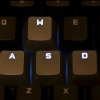Does occupying All or Most of your SATA ports limit bandwidth?
If you're running HDDs you shouldn't be worried about performance. Peak bandwidth of a single HDD is around 200MBps a SATA port can do ~600MBps. Your best case scenario will more or less be the speed of the cache and this is "fine". The biggest source of performance drops will be reading from disks instead of RAM/Cache. I'd need to check a block diagram of a motherboard to know the exact peak bandwidth, but either way if you're maxing it out, it won't feel slow - slow comes from the system stalling.
Pretty much any modernish board will support passive PCIe to m.2 adapters, you just might not be able to boot the OS from them.
Also be aware that a decent chink of WD Red drives use SMR, which has WAY worse write performance than CMR. Verify that your drive isn't affected. Check specific model numbers. THIS will matter MUCH MUCH more than any minor interface bottlenecking.
Also be aware that if this system is on 24/7 it'll cost $$$. I have a spare 3570k and board that I considered using as a NAS and passed on. 30 extra watts at 20 cents per KWH is $15 a year or $75ish over a 3 year span. Not the end of the world but do be aware of this extra cost.

.png.255947720031a641abdac78e663b681c.png)











Create an account or sign in to comment
You need to be a member in order to leave a comment
Create an account
Sign up for a new account in our community. It's easy!
Register a new accountSign in
Already have an account? Sign in here.
Sign In Now